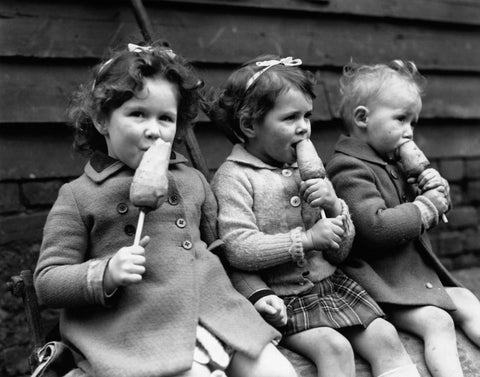
During the Blitz, the UK Had a Secret Weapon Against Nazi Raids: Carrots
Wear a sweater or you’ll catch a cold. Don’t swim after eating. Eat your carrots—they’ll improve your eyesight.
Parents have been repeating these adages to their children for generations—for so long, in fact, that it can be hard to pinpoint their origins. But for the carrot myth, at least, we can trace its widespread popularity to England during World War II.
During the summer of 1940, as the Battle of Britain waned, the Luftwaffe ushered in a new phase of the war — the Blitz. The Germans often struck at night, causing the whole of the U.K., particularly cities like London, to order citywide blackouts.
Still, British pilots were able to often intercept the Luftwaffe seemingly out of nowhere, thanks to the Royal Air Force’s Dowding radar system — a system for reporting incoming raids that plotted enemy aircraft as they were approaching Britain.
But the Dowding radar system was a secret, and to protect it, the U.K. government hatched a plot so ludicrous, so ingenious that it had the potential to actually work: carrots.
Can't see? Eat a carrot.
At the time, according to the World Carrot Museum, the U.K. had a temporary oversupply of carrots, so the government's Ministry of Food ran newspaper ads suggesting that the RAF's exceptional night-flying and target success were due to pilots eating carrots, whose high beta carotene content improved their vision.
The messaging was clearly intended for civilians to consume a surplus of homegrown vegetables, and whether the Germans bought it or not isn’t entirely clear.
“I have no evidence they fell for it, other than that the use of carrots to help with eye health was well ingrained in the German psyche,” John Stolarczyk, curator of the World Carrot Museum, told the Smithsonian. “It was believed that they had to fall for some of it.”
What is clear, however, it that Brits believed that eating carrots would allow them to see better during blackouts and the consumption of carrots skyrocketed by the end of 1940 into 1941.
The ministry’s “War Cookery Leaflet 4″ went even further, filling pages with recipes for carrot pudding, carrot cake, carrot marmalade and carrot flan. Concoctions like “Carrolade” made from rutabagas and carrots emerged from other similar sources. None of it was entirely mouthwatering, naturally, but it was certainly patriotic.
British advertisements with the slogan “Carrots keep you healthy and help you see in the blackout” cropped up on street corners throughout the country.
Animated characters like “Dr. Carrot” were everywhere — from the radio to posters. Even Disney got in on the act. According to the Smithsonian, “Hank Porter, a leading Disney cartoonist designed a whole family based on the idea of Dr. Carrot — Carroty George, Pop Carrot and Clara Carrot — for the British to promote to the public.”
From there, the lore took root and hasn’t changed in decades.
But, inquiring children may want to know, does the science back up the claim? Or is it just another parental myth? Both, as it turns out! A steady intake of vitamin A (another name for the beta carotene in carrots) is essential for one’s eye health; and, according to the Mayo Clinic, nutritionally important to vision, growth, cell division, reproduction and immunity. Still, eating carrots won’t fix myopia or give you 10/20 eyesight. “Somewhere on the journey,” Stolarczyk writes, “the message that carrots are good for your eyes became disfigured into improving eyesight.”
Regardless of their health benefits, real or imagined, contemporary or historical, you should eat your carrots. They’re delicious — particularly when they are in a carrot cake doused with cream cheese frosting.
historynet magazines
Our 9 best-selling history titles feature in-depth storytelling and iconic imagery to engage and inform on the people, the wars, and the events that shaped America and the world.
